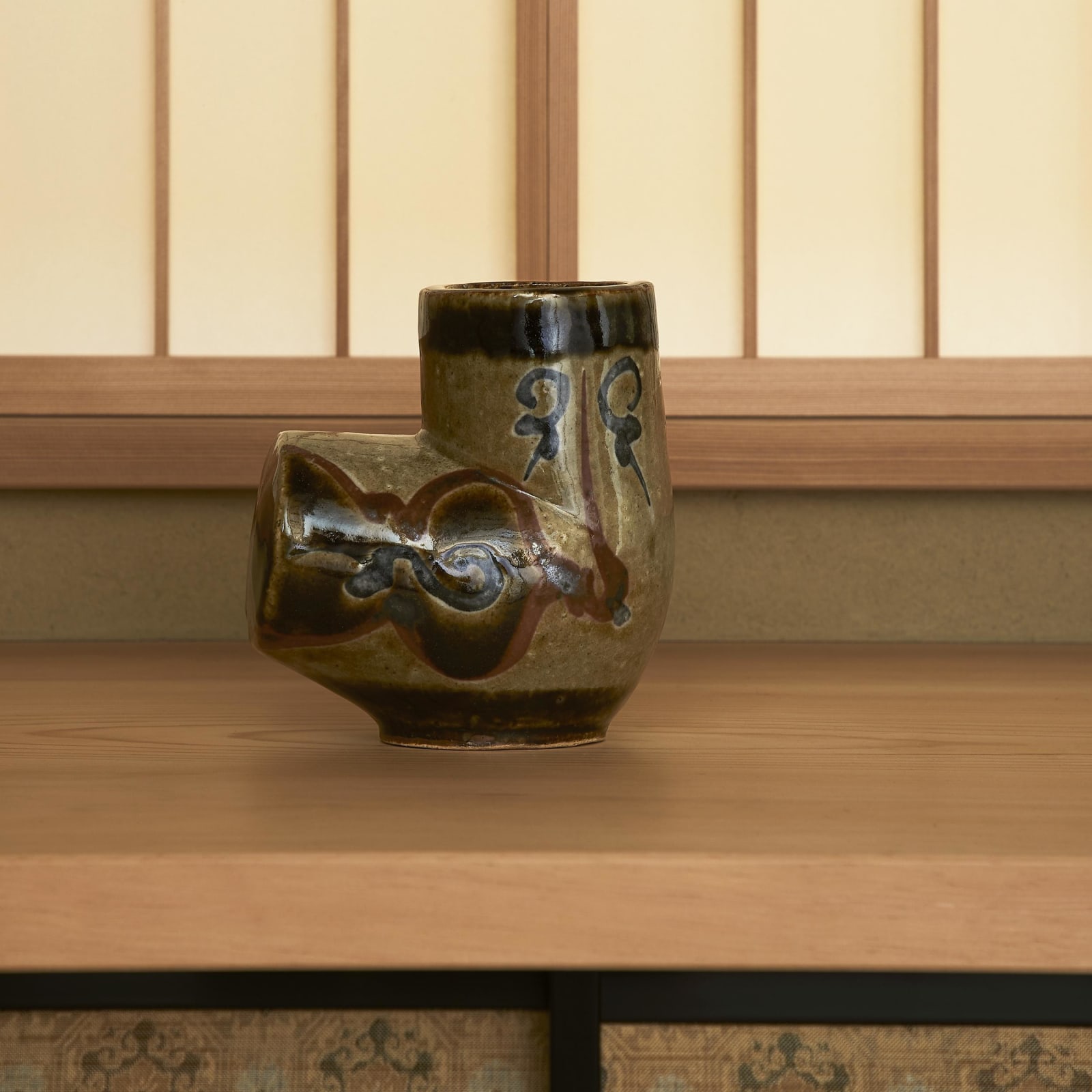Kawai Kanjirō (1890−1966)
Jar with Yellow, Cobalt Blue, and Copper Red Glazes
With a box signed by the artist
L12 x W17.5 x H18.8 cm
Further images
Two cylinders joint one another at a right angle. That the vertical end opens a mouth whereas the horizontal one closes claims its functionality as a jar. The L-shaped pipe-like appearance evokes of an industrial product, while the plump, rounded body suggests that of a waterfowl, giving this inorganic ware a life. Such a form, together with others jars that are not perfectly round, are called henko and are favored by Kawai Kanjiro. Henko by Kawai are left many today. As if to suggest a notion of what he makes might not be merely a container, Kawai tries his hand at focusing more on its sculptural form through dismantling the symmetry.
Referring to the works in the same form, two pieces, Jar with Yellow, Cobalt Blue and Copper Red Glaze in the collection of Kawai Kanjiro’s House and Copper Red Glaze Jar with Mud Decoration of the Kawakatsu Collection in the National Museum of Modern Art, Kyoto, are known to the public. Both were made around 1950/51, when he was at the age of sixty. The one in the collection of Kawai Kanjiro’s House, in particular, decorated with cobalt blue, copper red, and iron glazes on the ground of yellow glazes is extremely similar to the present work, suggesting that this work was produced around the same time.
Kawai Kanjiro (ceramist; 1890−1966)
Shimane-born ceramist. Graduated from Tokyo Higher Technical School, and apprenticed at Kyoto tojiki shikenjo (Kyoto research institute for ceramics). Constructed a kiln in Gojozaka in Kyoto, and started producing ceramics of his own technique and style under the inspiration of ancient Chinese and Korean ceramics. Led the Mingei movement with Yanagi Muneyoshi. Brought new wind to the modern ceramics with his solid and austere style, which sought for yonobi (functional beauty). Received the Grand Prize at Milan Triennale.
Referring to the works in the same form, two pieces, Jar with Yellow, Cobalt Blue and Copper Red Glaze in the collection of Kawai Kanjiro’s House and Copper Red Glaze Jar with Mud Decoration of the Kawakatsu Collection in the National Museum of Modern Art, Kyoto, are known to the public. Both were made around 1950/51, when he was at the age of sixty. The one in the collection of Kawai Kanjiro’s House, in particular, decorated with cobalt blue, copper red, and iron glazes on the ground of yellow glazes is extremely similar to the present work, suggesting that this work was produced around the same time.
Kawai Kanjiro (ceramist; 1890−1966)
Shimane-born ceramist. Graduated from Tokyo Higher Technical School, and apprenticed at Kyoto tojiki shikenjo (Kyoto research institute for ceramics). Constructed a kiln in Gojozaka in Kyoto, and started producing ceramics of his own technique and style under the inspiration of ancient Chinese and Korean ceramics. Led the Mingei movement with Yanagi Muneyoshi. Brought new wind to the modern ceramics with his solid and austere style, which sought for yonobi (functional beauty). Received the Grand Prize at Milan Triennale.





